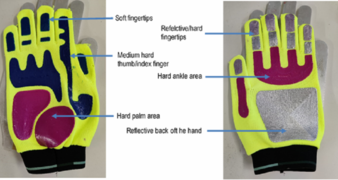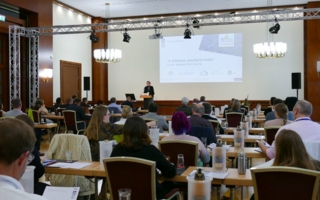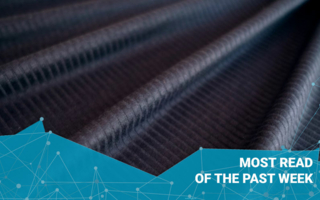16/11/2022 – Several functional modifications in a single process step — auf Deutsch lesen
Multifunction 3D printing on textiles
A 3D printing process for textiles has been developed at STFI in which different functions can be set within one print pattern by software.
By applying 3D printing to functionalize textiles, various extrusion processes with small single nozzles are applied. With this technology only one material at the same time could be processed while manufacturing. If more than one material is required, machines with two or more printing nozzles are used or the material has to be replaced in between. The result is loss of time due to setup times, while at the same time there is no possibility of grading the properties.
The aim of the project
The aim of the research project “Multifunction 3D printing on textiles” was to generate at least three functional modifications, e.g. different degrees of surface hardness of a printed structure on a textile. To achieve this, it was necessary to develop a 3D printing process for textiles in which different functions were set within one print pattern by software. During the manufacturing process, two different materials were applied onto the textile substrate via a variably adjustable mixing ratio. So, it is possible to give the textiles the desired functional properties exactly where they were needed according to the requirements.
The process in detail
The project is focused on a two-component (2K) print head that enables the supply of two different viscous materials which were mixed together in a static mixing tube with variable ratios. With the aid of the 2K print head and an adapted slicer software, a 3D printing process for textiles was developed for generating at least three functional modifications.
The functional modifications in gradients were generated by adjustment of the mixing ratio of two viscous materials while the printing process. These materials were water-based polyurethane dispersions modified with rheological and dispersing additives as well as functional materials. The main achievements were an increased abrasion resistance, gradual hydrophobication, optical effects and variable surface hardness.
Using the developed functional materials, a wide variety of printed samples with variable mixing ratios were produced, and the 3D printing process was developed in the process. The functionality of the respective functional properties was successfully demonstrated in the corresponding test procedures. Functional samples with variable surface hardnesses in the range of 30 - 90 Shore A were produced. The hydrophobic effectiveness was confirmed by contact angle measurements with water approaching 100°. The abrasion-resistant patterns achieved the highest performance level of abrasion resistance and in some cases withstood 15,000 abrasion cycles against sandpaper without pitting. Optical effects as well as reflective properties were created through the use of various effective pigments.
The results
At the end of the research work, the 3D printing process was used to produce printed sock and glove samples that were equipped with several functional modifications in a single process step. This process thus represents a resource-efficient alternative to conventional methods (e.g. screen printing). At the same time, it favors the continuing trend towards customized production.




